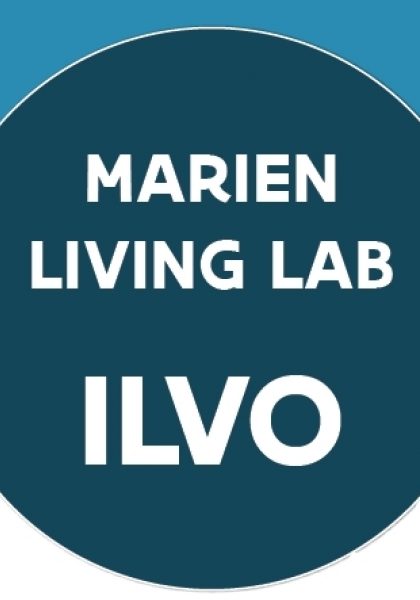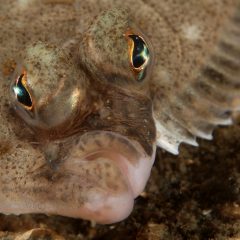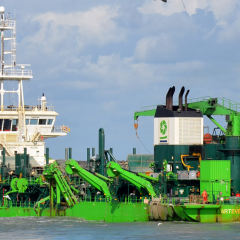Dossier Ecosystem-oriented marine modeling and management
Marine ecosystems consist of ecosystem components (fish, benthos, mammals) that interact in a complex and dynamic way. Models of marine ecosystems are analytic reflections of these ecosystem interactions that can help us to understand ecosystem functioning, assess the current status of the ecosystem, and predict how fishing, other human activities and management may influence the ecosystem's status and functioning.
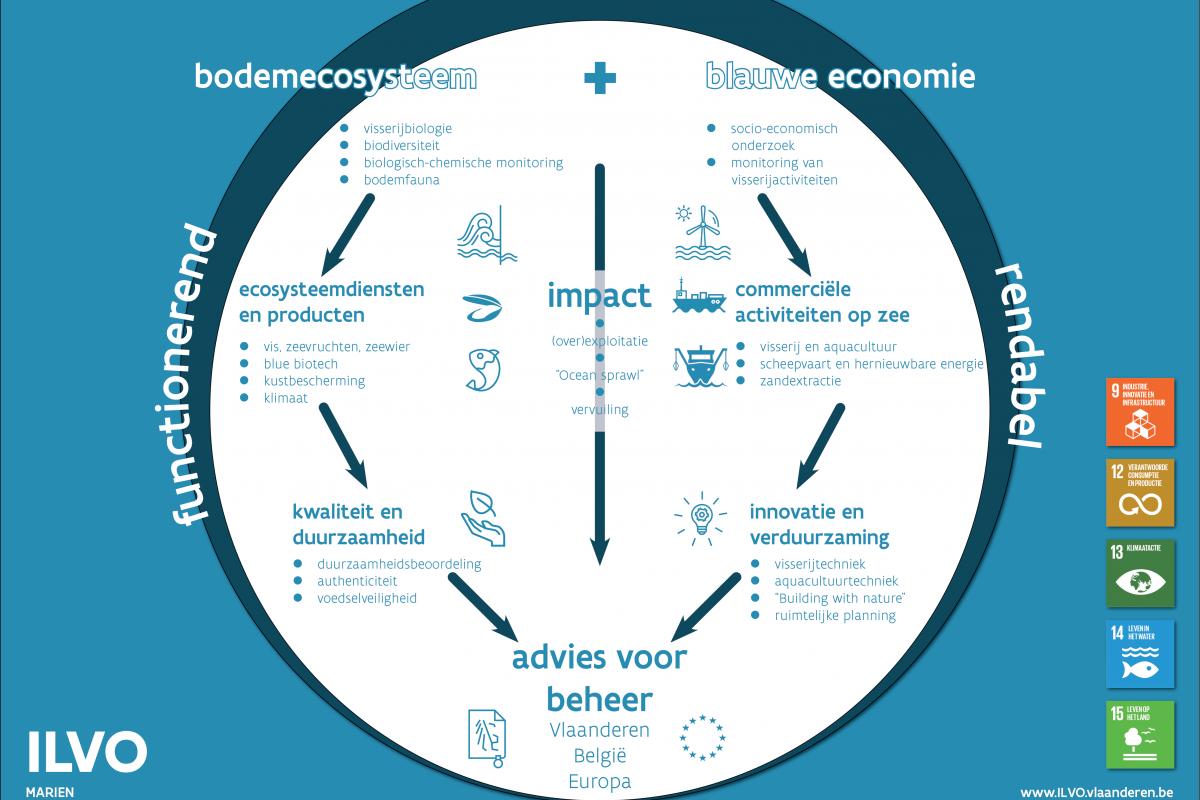
What does ILVO do?
-
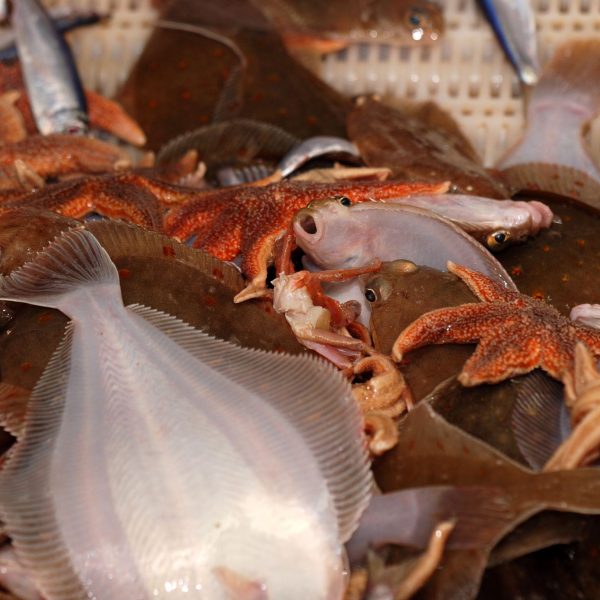 ILVO integrates the broader ecosystem into the models used for monitoring fish stocks.
ILVO integrates the broader ecosystem into the models used for monitoring fish stocks. -
 Several models of different human activities are integrated to get an overview of the cumulative effect on the ecosystem.
Several models of different human activities are integrated to get an overview of the cumulative effect on the ecosystem. -
 Ecosystem-based models to run climate change scenarios (IPCC) to investigate the effect on the ecosystem and our fisheries.
Ecosystem-based models to run climate change scenarios (IPCC) to investigate the effect on the ecosystem and our fisheries. -
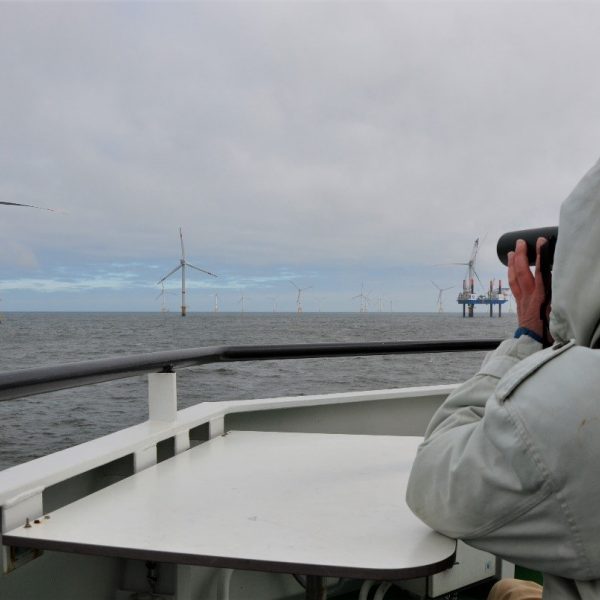 Ecosystem-based models that can test fisheries management policies to analyse the resilience of the ecosystem and fish stocks.
Ecosystem-based models that can test fisheries management policies to analyse the resilience of the ecosystem and fish stocks.
Human impacts on the marine environment
More than 70% of the Earth's surface is covered by marine waters. We benefit from this environment in several ways (e.g., food source, oil extraction, and offshore renewable energy). The various human activities that exploit these resources affect the marine ecosystem. These disturbances can have short- or long-term effects and can be carried on throughout the ecosystem because of feedback loops. The saltwater medium provides a higher connectivity between the different components of the habitat, ecosystem and its users as it allows movement of its components in three dimensions. Furthermore, feedback loops might cause the effects of disturbances to circle back to the human population through changes in the quality and/or quantity of the ecosystem services (e.g., lower fish stocks and poor water quality).
The Belgian fishing industry is active across the Northeast Atlantic, from the Bay of Biscay, across the Celtic and Irish Sea, and heading east to the English Channel and the North Sea. Here, several zones are not only utilised for fishing but also for oil and aggregate extraction, power generation for offshore renewable energy and protection of marine life. All of these activities can have a significant impact on the marine environment.
Systems thinking approach
The marine environment is often studied through monitoring, directed experiments or observations. These approaches focus on a single piece of the puzzle and fail to capture the complexity of the entire system and the broader consequences. To be able to capture the complexity and understand how components influence each other, it is important to incorporate a system thinking approach. Within this approach, ecosystem-based fisheries management is applied rather than a single-species management approach. To be able to comprehend the complexity of the system, researchers started using descriptive and predictive models, often even linking several models to each other. In simpler terms, a model is a calculator that becomes more accurate when it incorporates more data and knowledge. Although this method is still in an early stage, developments such as open data policies, big data, new types of data, and high-performance computing have increased the potential and possibilities for this approach and its applications. Further development within ILVO will enable us to give a more substantiated, accurate and quicker response to management and policy-related questions ensuring that policymakers and other clients can make informed decisions.
Potential applications of ecosystem models
1. Fisheries management
Stock assessments estimate the current biomass of exploited fish stocks and their exploitation rate. These estimates are used to draft advice on fishing quotas to set limits on harvesting, thus allowing the stocks to replenish. Currently, there are two types of advice. In the single-species fisheries advice, the assessment focuses on only one species, ignoring the potential of the fishing fleet to catch multiple species. This poses problems to mixed fisheries because a low quotum for one species may be exhausted before the quota of other species, resulting in the closure of fishing activities. These types of interactions are addressed in mixed-species fisheries advice (e.g. ICES WGMIXFISH, ICES WGSAM, etc.). At ILVO we provide the Flemish government with scientific advice on our commercial fish stocks. To improve this advice, we need to develop ecosystem models that take both the complexity of the fishery, trophic interactions and environmental dynamics into account. As such, the scientific advice as drafted in an international context by ICES (https://doi.org/10.17895/ices.pub.5466) will shift towards an ecosystem-based fisheries management approach (ICES and EBM.pdf) and ILVO will take part in this innovative process.
2. Environmental monitoring
For many years, ILVO Marine has been responsible for and is dedicated to the monitoring of and reporting on the environmental status of the Belgian waters in the North Sea (BPNS). These intensive monitoring activities have created an enormous amount of valuable data. To monitor the environment, all these data - including data from external databases - can be combined and analysed to build different ecosystem-based models, not only for the BPNS but also for adjacent waters. These models could be used to answer several questions on the human impact on the structure and functional components of the ecosystem within the ecosystem-based environmental impact assessment. Furthermore, using ecosystem models, we will develop indicators that evaluate and score the effect of human activities on the marine ecosystem. These indicators can also be included in the scientific advice provided to the policymakers, on how our activities affect food web interactions and the ecosystem’s health.
3. Climate change
Building predictive models can also be explored to analyse long-term changes in the marine ecosystem such as changing climatic conditions and its associated ecosystem services. For instance, stock-recruitment relationships may change because fish larvae and prey may mismatch or fish growth may be affected when metabolism increases with encountered temperature. Using the ecosystem models we can also examine the effect of climate change on benthic productivity. Moreover, ecosystem models can be used to test “what-if” scenarios in climate change and the impact on the marine ecosystem. Using projected changes in environmental parameters, the future state of the marine ecosystem can be simulated and forecasted.
4. Marine spatial planning
Within ecosystem models, we can also include a marine spatial component. Adding this dimension will make the model a better representative of the ecosystem as the ecosystem does not only evolve through time but also changes through space. As such, ecosystem models can be utilised to test different scenarios in Marine Spatial Planning. For example, we can examine the effect of spatial closure of spawning and breeding sites on the fish stocks and fisheries productivity and economic viability. Also, the effect of local changes on the wider ecosystem can be examined such as potential spill-over effects as a result of the construction of offshore wind turbines.
5. Land and sea interaction
Due to the many estuaries surrounding the North Sea, there is a strong connection between terrestrial and marine environments. Water from rivers often transports a high concentration of runoffs from land to the sea causing nutrient loading, eutrophication and pollution. The impacts of eutrophication and pollution, as a result of riverine outputs, on the ecosystem can also be investigated using the marine ecosystem models.
Potential scenarios
1. Survival of by-catch
Despite recent technical advances, zero catch of non-target species by commercial fishing fleets is an impossible goal, especially in mixed fisheries such as the Belgian fisheries. Survival models are often utilized to determine whether bycatch must be landed or can be discarded back into the sea. Discarded fish can either survive and go back to the population or die and sink to the seabed, contributing to the detritus. Using ecosystem models, we can examine the effects of the surviving and non-surviving percentages on the entire fish stock and the whole ecosystem.
2. Technical models in fisheries
Specific guidelines and policies on gear and vessel specifications must be adhered to. Fishing gears categorized in the same type can vary in their characteristics, however. This may result in different catches and mortality of non-targeted species and bycatch causing varied impacts on fish stocks, the whole ecosystem and even the profitability of the fishing sector. Ecosystem models can simulate the effects of different gear types and technical measures, and this can be used to create advice for policymakers to update existing regulations.
3. Aquaculture
As aquaculture is becoming more common at sea, concerns about its potential effect on the environment are put in the spotlight. We can predict the potential consequences of these aquaculture projects by implementing an aquaculture scenario in the ecosystem model and examining the effects this scenario has on our ecosystem indicators. For instance, we can include a marine spatial planning (MSP) scenario in the model to determine how aquaculture farms, which may take up a certain area in the sea, affect the fishing activities, biodiversity, etc. in that area.
4. Offshore windfarms
As the demand for green and renewable energy is increasing, more ocean space is being assigned to the construction of offshore wind farms. This designated space is often no longer accessible for other users of the ocean such as fishermen, thus serving as a de facto protected area. Policymakers can investigate the effect the development of offshore wind farms might have on the ecosystem using different marine spatial planning scenarios in the ecosystem models.
5. Others
Other activities such as sand extractions, dredging, recreational fishing activities, military exercises, etc. can also affect the marine ecosystem. These impacts can be direct but also indirect and cascade through the ecosystem. The ecosystem models are, in particular, very relevant for investigating the indirect effects of these activities on the ecosystem.
Role of ILVO, both regionally and internationally
Modelling marine ecosystems is one of the means by which ILVO addresses the incremental move towards ecosystem-based fisheries management. ILVO has a long-standing expertise in assessments of single species stocks (e.g. WGNSSK (ices.dk)). Belgian fisheries are inherently mixed, catching bottom-dwelling flatfish, roundfish, elasmobranchs and crustaceans. Mixed fisheries models take account of the full suite of single species stocks to provide multispecies or mixed fisheries advice. Management of mixed fisheries is further challenged by increasingly complex interactions and dynamics in the marine environment. The move towards an ecosystem approach to fisheries and a fully ecosystem-based fisheries management requires that these changing dynamics in marine ecosystems are accounted for in the assessment models of fish stocks.
The ecosystem does not only affect fish and fisheries: there is also a clear feedback loop created by the impact of fisheries on ecosystems. Holistic and regional assessments of these interactions have so far been limited and they have not found their way into fisheries management practices. Marine ecosystem models that capture the effect of fisheries on the marine ecosystem and models that capture the feedback loop from the ecosystem dynamics to the fisheries are required to move towards ecosystem-based fisheries management. ILVO seeks to contribute to this development and is currently helping to set out the lines of model developments through partnership in three EU-funded Horizon2020 projects being SEAwise, EcoScope and ILIAD.
The development of ecosystem models will enable us to respond faster and more accurately to complicated questions. We will be able to provide accurate advice to regional partners, including the Flemish government, the federal public service of health, food chain safety and environment, the Ministry of the North Sea and the federal public service of the economy. In addition to policymakers, we intend to provide services and advice to the Belgian fishing industry and their activities across the NE Atlantic. These include changes in fish distribution induced by climate change as well as the potential for reducing seabed impacts through gear changes or avoidance of sensitive fishing grounds. ILVO intends to provide advice through its position with the international scientific community in ICES and the Scientific, Technical and Economic Committee for Fisheries (STECF), and as such to assist in providing ecosystem-based fisheries advice to its international clients, including the European Commission (e.g. Common fisheries policy (CFP) and the Marine Strategy Framework Directive, the new EU Biodiversity Action Plan) and the OSPAR Commission. Lastly, these developments will provide an opportunity to trade-off the fisheries benefits with conversation concerns raised by environmental NGOs.
Contact an expert
